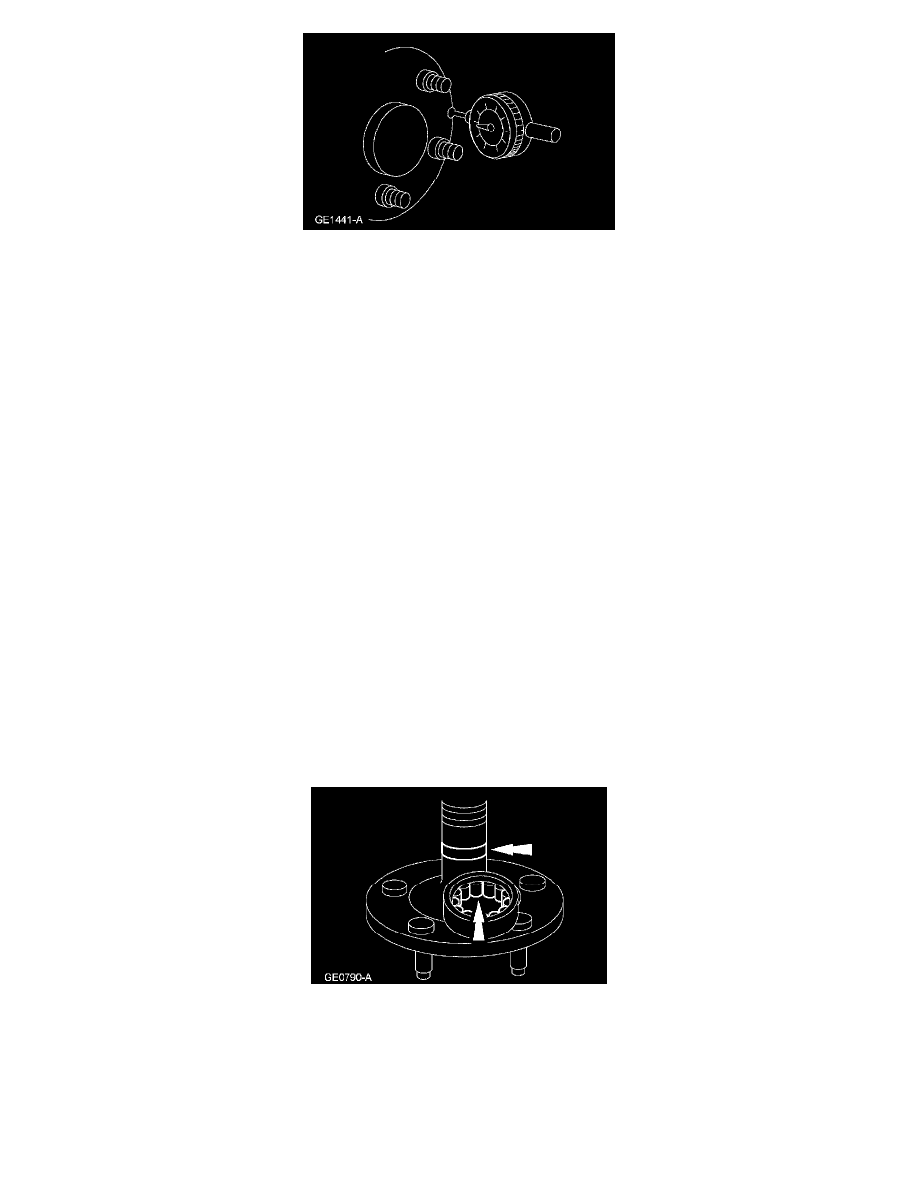Grand Marquis V8-4.6L VIN V Flex Fuel (2006)

1. Position the Dial Indicator Gauge with Holding Fixture on the wheel hub or axle flange face, as close to the outer edge as possible. Zero the
indicator to allow the pointer to deflect either way.
2. Rotate the hub or flange one full turn and note the maximum and minimum readings. The difference between the maximum and minimum readings
will be the total face runout. The runout must not exceed 0.127 mm (0.005 inch).
Drive Pinion Stem and Pinion Flange
Check the pinion flange runout when all other checks have failed to show the cause of vibration.
One cause of excessive pinion flange runout is incorrect installation of the axle drive pinion seal. Check to see if the spring on the seal lip has been
dislodged before installing a new ring gear and pinion.
Axle Noise
NOTE: Before disassembling the axle to diagnose and correct gear noise, eliminate the tires, exhaust, trim items, roof racks, axle shafts and wheel
bearings as possible causes. Follow the diagnostic procedures in Vehicle/Testing and Inspection.
The noises described as follows usually have specific causes that can be diagnosed by observation as the unit is disassembled. The initial clues are the
type of noise heard during the road test.
Gear Howl and Whine
Howling or whining of the ring gear and pinion is due to an incorrect gear pattern, gear damage or incorrect bearing preload.
Bearing Noise
Bearing rumble sounds like marbles being tumbled. This condition is usually caused by a worn/damaged wheel bearing. The lower pitch is because the
wheel bearing turns at only about 1/3 of the driveshaft speed. Wheel bearing noise also may be high-pitched, similar to gear noise, but will be evident
in all 4 driving modes.
NOTE: A low-pitched rumble normally associated with a worn/damaged wheel bearing can be caused by the exterior luggage rack or tires.
A wheel bearing noise can be mistaken for a pinion bearing noise. Check the wheel bearing for rotating smoothness and end play. Install new wheel
bearings as necessary.
If the wheel bearing is damaged, the roller surface on the axle shaft may also be damaged. Install a new axle shaft if any damage is detected.
Bearing whine is a high-pitched sound similar to a whistle. It is usually caused by worn/damaged pinion bearings, which are operating at driveshaft
speed. Bearing noise occurs at all driving speeds. This distinguishes it from gear whine which usually comes and goes as speed changes.
As noted, pinion bearings make a high-pitched, whistling noise, usually at all speeds. If however there is only one pinion bearing that is
worn/damaged, the noise may vary in different driving phases. New pinion bearings must not be installed unless scoring or damage is found or there is
a specific pinion bearing noise. A worn/damaged bearing will normally be obvious at disassembly. Examine the large end of the rollers for wear. If the
